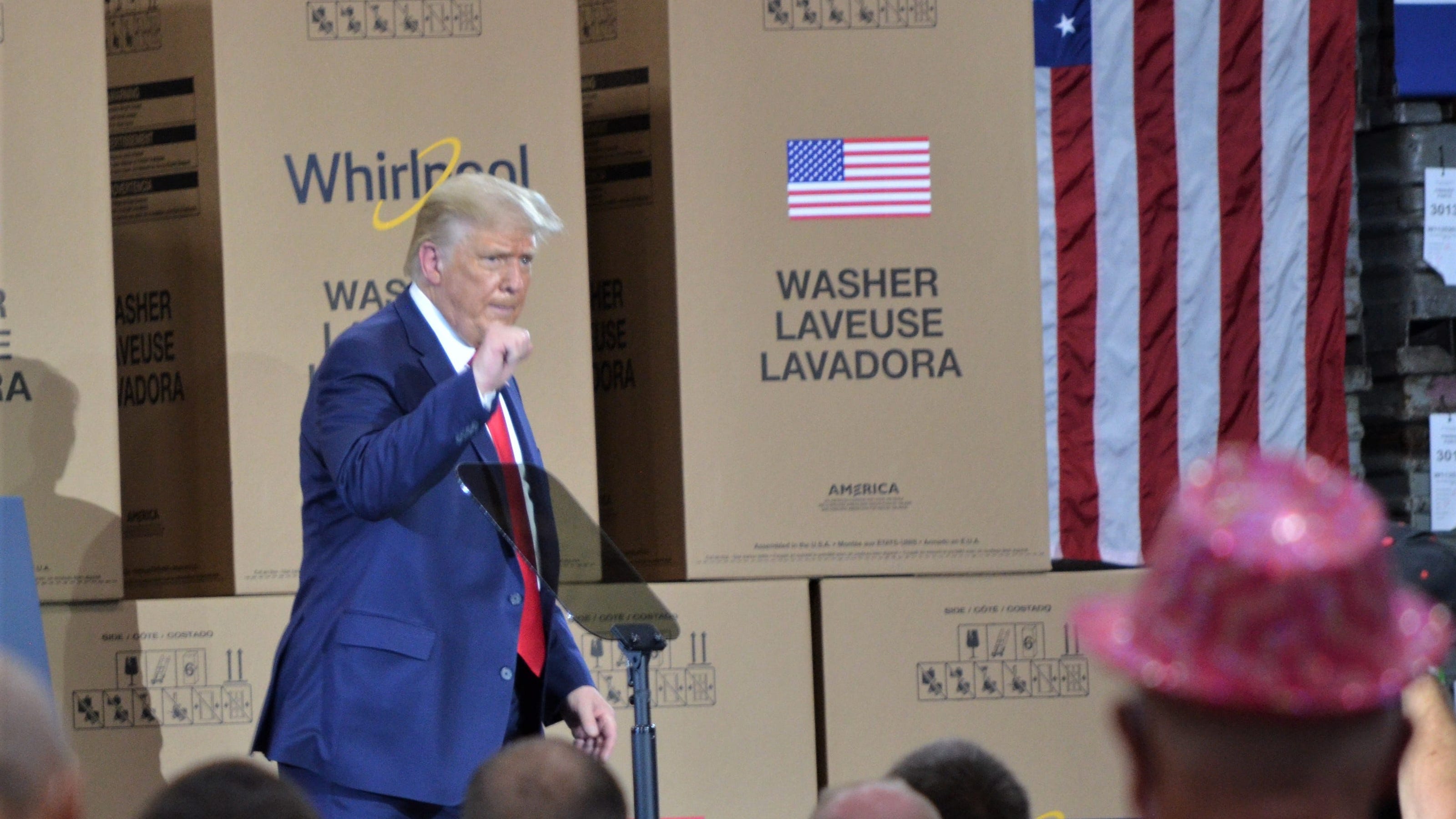Commercial Aircraft And Engine Imports: The Threat Of Trump Tariffs

Table of Contents
The Impact of Trump's Tariffs on the US Aviation Industry
Trump's tariffs on imported aircraft and engines sent shockwaves through the US aviation sector, triggering a cascade of negative consequences.
Increased Costs for Airlines
- Higher prices for new aircraft and engines: Tariffs directly increased the acquisition costs of new aircraft and engines, significantly impacting airline budgets. This was particularly true for airlines relying heavily on Airbus aircraft, a major European manufacturer.
- Reduced competitiveness: Higher operating costs due to tariffs reduced the competitiveness of US airlines on the global stage, affecting their ability to offer competitive fares and expand their routes.
- Potential for higher airfares for consumers: The increased costs were ultimately passed on to consumers in the form of higher airfares, reducing air travel affordability.
- Impact on airline profitability: Airlines faced squeezed profit margins due to increased costs coupled with potentially stagnant or reduced demand due to higher fares. This is especially concerning for smaller airlines with thinner profit margins to start with.
Boeing, a major US aircraft manufacturer, also felt the impact. While a significant portion of their production is domestic, they rely on a complex network of international suppliers for various parts and components. These tariffs added costs to their supply chain, impacting their production capabilities and overall profitability. Reports from the Congressional Research Service detailed the significant added costs faced by Boeing due to these tariffs and their suppliers.
Supply Chain Disruptions
- Delays in aircraft deliveries: Tariffs led to delays in the delivery of both new aircraft and essential parts, impacting airline expansion plans and fleet modernization efforts.
- Shortages of parts: The added cost and complexity of importing parts resulted in shortages, impacting maintenance schedules and potentially causing flight cancellations.
- Potential for production halts: Supply chain disruptions could cause production halts at both aircraft manufacturers and maintenance facilities, further hindering operations.
- Impact on maintenance and repair operations: The availability of spare parts was severely impacted, resulting in higher costs and longer downtime for maintenance and repair operations.
The global nature of the aviation supply chain means that disruptions in one area cascade across the network. A delay in the delivery of a single specialized component from a European supplier can halt an entire assembly line, highlighting the intricate interconnectedness of this global system.
Job Losses and Economic Downturn
- Potential job losses in the aviation industry and related sectors: The combined effects of increased costs, reduced competitiveness, and supply chain disruptions threatened job losses across the entire aviation ecosystem, from manufacturing to maintenance and ground services.
- Negative impact on GDP growth: The aviation industry’s significant contribution to the US economy means that disruptions in this sector directly impact GDP growth. The tariffs significantly dampened the sector’s economic contribution.
- Reduced investment in the sector: The uncertainty created by the tariffs discouraged investment in research, development, and expansion within the US aviation industry.
Economic models from various think tanks projected substantial job losses and GDP reductions due to the tariffs. The specific numbers varied depending on the model and assumptions, but all indicated significant negative economic consequences. Analysis of employment figures within the aviation industry following the tariff imposition revealed a slowing of growth and potential job losses in related sectors.
The International Response to Trump's Tariffs
The Trump administration's tariffs provoked strong reactions from international partners, leading to a complex web of retaliatory measures and trade disputes.
Retaliatory Tariffs from Other Countries
- Examples of retaliatory tariffs imposed by the EU, Canada, and other major aircraft manufacturing nations: The EU, Canada, and other countries affected by US tariffs imposed retaliatory measures on a variety of US goods, impacting various sectors of the US economy. This tit-for-tat tariff escalation further complicated the situation.
- Specific examples of affected goods: Specific goods subjected to retaliatory tariffs included agricultural products, automobiles, and various manufactured goods.
These retaliatory tariffs significantly harmed US exports and worsened the overall US trade balance. The escalation of trade tensions further damaged international relationships.
WTO Disputes and Legal Challenges
- Mention any WTO challenges filed against the US tariffs: The US tariffs faced legal challenges within the World Trade Organization (WTO), where various countries challenged their legality under international trade rules.
- Discuss the legal arguments and outcomes (or potential outcomes): The legal arguments centered on whether the tariffs were justified under WTO rules and whether they caused undue harm to other countries. The outcomes of these disputes had major implications for international trade law and the future of trade relations.
The WTO plays a vital role in regulating international trade and resolving disputes. The outcomes of these cases shaped the landscape of international trade law and influenced future trade policies.
Impact on International Relations
- Discuss the impact of the tariffs on US relations with key trading partners in the aviation sector: The tariffs strained US relationships with key trading partners, such as the EU and Canada, damaging trust and cooperation in the aviation sector and beyond.
- Analyze the broader geopolitical implications of trade disputes related to the aviation industry: The trade disputes spilled over into broader geopolitical tensions, complicating international relations and affecting global cooperation on other issues.
Long-Term Consequences and Future Outlook
The long-term consequences of the Trump-era tariffs remain significant, requiring careful consideration of the restructuring of the global aviation supply chain, the need for trade policy reform, and adaptation strategies for the US aviation industry.
Restructuring of the Global Aviation Supply Chain
- Discuss potential shifts in global manufacturing and sourcing patterns as a result of the tariffs: The tariffs accelerated the diversification of supply chains, with companies seeking alternative sourcing options to reduce reliance on any single country or region.
- Analyze the long-term implications for the competitiveness of the US aviation industry: The ability of the US aviation industry to adapt to these shifts in global manufacturing and sourcing will determine its future competitiveness on the world stage.
The Need for Trade Policy Reform
- Discuss the need for more predictable and stable trade policies in the aviation sector: The experience with the Trump tariffs highlighted the need for more stable and predictable trade policies to ensure a healthy and thriving aviation industry.
- Suggest policy recommendations to mitigate the negative impacts of future trade disputes: Policy recommendations include promoting free and fair trade agreements, strengthening dispute resolution mechanisms, and fostering closer collaboration with international partners.
Adaptation Strategies for the US Aviation Industry
- Discuss strategies the US aviation industry can adopt to better cope with future trade uncertainties: The US aviation industry needs to develop strategies to diversify its supply chains, invest in domestic manufacturing capabilities, and improve its resilience to future trade shocks.
- Suggest measures such as diversification of supply chains, investment in domestic manufacturing, and lobbying for trade policy changes: These measures will help the US aviation industry navigate the complexities of global trade and maintain its competitiveness.
Conclusion: The Lingering Threat of Tariffs on Commercial Aircraft and Engine Imports
The Trump-era tariffs on commercial aircraft and engine imports had a profound and lasting impact on the US aviation industry. Increased costs, supply chain disruptions, economic downturn, and damaged international relations are just some of the consequences that continue to ripple through the sector. The need for a stable and predictable trade environment is undeniable. We must continue to monitor the ongoing effects of these tariffs and advocate for policies that promote free and fair trade in the aviation sector. Research current trade policies related to aircraft import tariffs and engine import tariffs, and engage with policymakers to ensure a healthy future for the US aviation industry. The long-term health of this crucial sector depends on a commitment to smart and consistent trade policies that foster global cooperation and competitiveness.

Featured Posts
-
 Grand Slam Track Can This New League Save Athletics
May 11, 2025
Grand Slam Track Can This New League Save Athletics
May 11, 2025 -
 Mma Torchs 3 Epic Mma Fights 5 10 And 25 Minute Battles
May 11, 2025
Mma Torchs 3 Epic Mma Fights 5 10 And 25 Minute Battles
May 11, 2025 -
 Sylvester Stallone One Film He Only Directed And Its Critical Failure
May 11, 2025
Sylvester Stallone One Film He Only Directed And Its Critical Failure
May 11, 2025 -
 Analizando El Regalo De Uruguay A China Clave Para El Futuro De Sus Exportaciones Ganaderas
May 11, 2025
Analizando El Regalo De Uruguay A China Clave Para El Futuro De Sus Exportaciones Ganaderas
May 11, 2025 -
 U S China Trade Talks Exclusive Role Of Xis Security Advisor
May 11, 2025
U S China Trade Talks Exclusive Role Of Xis Security Advisor
May 11, 2025
